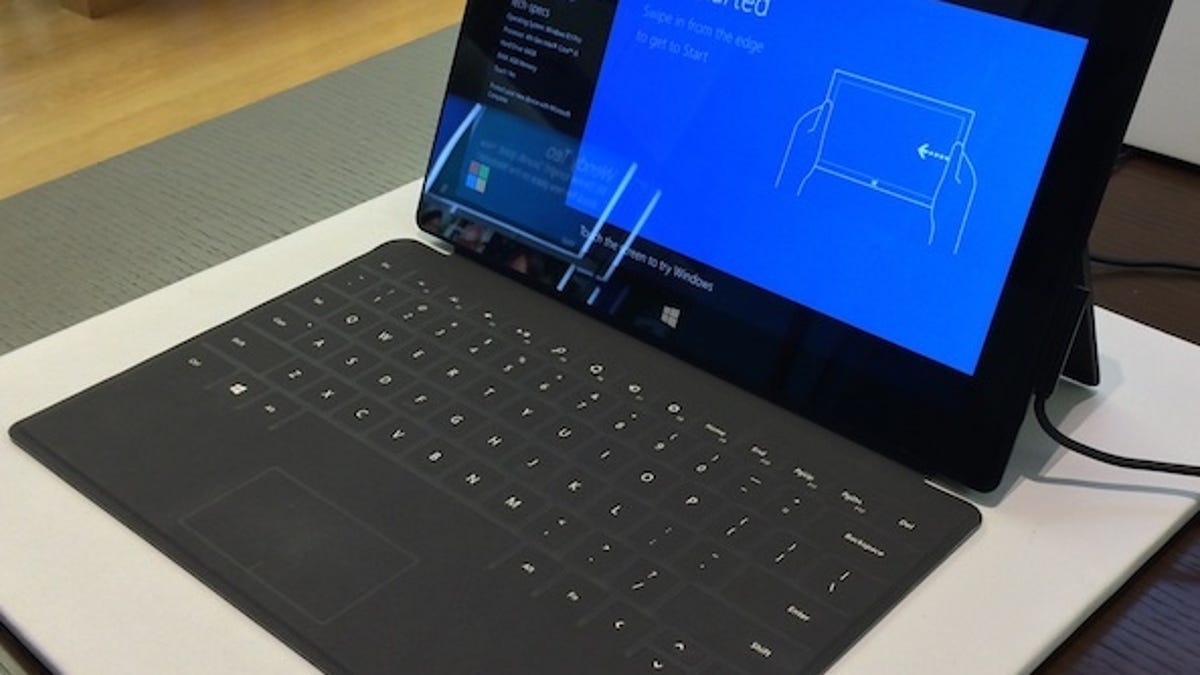As Surface surges, consumer PCs soften, Microsoft says
While the company was upbeat about Surface and Xbox One, it cited continued weakness in the consumer PC market.

During its second-quarter earnings conference call, Microsoft said it's encouraged by the surge in revenue for the Surface tablet-laptop hybrid. But this is happening against a backdrop of a weak consumer PC market.
Microsoft on Thursday reported fiscal second-quarter results that were better than expected. The company had sales of $24.5 billion, or 78 cents per share. Wall Street had expected revenue of $23.7 billion with a profit of 68 cents a share.
Devices and consumer revenue grew 13 percent to $11.91 billion. Surface revenue more than doubled to $893 million, up from $400 million in the first quarter.
But in its earnings statement, the software giant cited a "continued softness in the consumer PC market."
Chris Suh, general manager of Investor Relations at Microsoft, expanded on this during the earnings conference call.
"The licensing segment, which primarily includes Windows OEMs (PC makers), consumer Office, and Windows Phone [revenue], declined 6 percent, reflecting the overall PC and device market trends," Suh said.
He continued: "Total Windows OEM revenue declined 3 percent; 12 percent growth in Windows Pro was offset by a 20 percent decline in Windows non-Pro," he said. Windows non-Pro tends to be consumer PC market-centric.
However, Amy Hood, Microsoft's chief financial officer, was upbeat about Microsoft's consumer devices, namely Xbox One and Surface:
We continued to make significant progress in the consumer space, headlined by Xbox One which launched in 13 markets and sold 3.9 million units in just over five weeks...Surface demand continued to grow with improvement of execution at retail and favorable reviews of the new Surface devices. Sequentially both [Surface] units and revenue more than doubled this quarter.
We feel good about the progress we have made over the past couple of quarters and enthusiastic about the overall opportunity ahead for Surface.
But one analyst implied, via a question, that Surface was losing money: "Surface is still losing money even with the almost $900 million run rate of revenue in the quarter -- what kind of volume do you need to make money?"
Hood said: "We launched Surface to create a product that showcased what can happen when you innovate in hardware...and software. We learned a lot over the course of this journey. We have to make more meaningful progress."
The analyst is correct, however. Despite the $893 million in Surface revenue, "Surface cost of revenue was $932 million," Microsoft said in an SEC filing.

